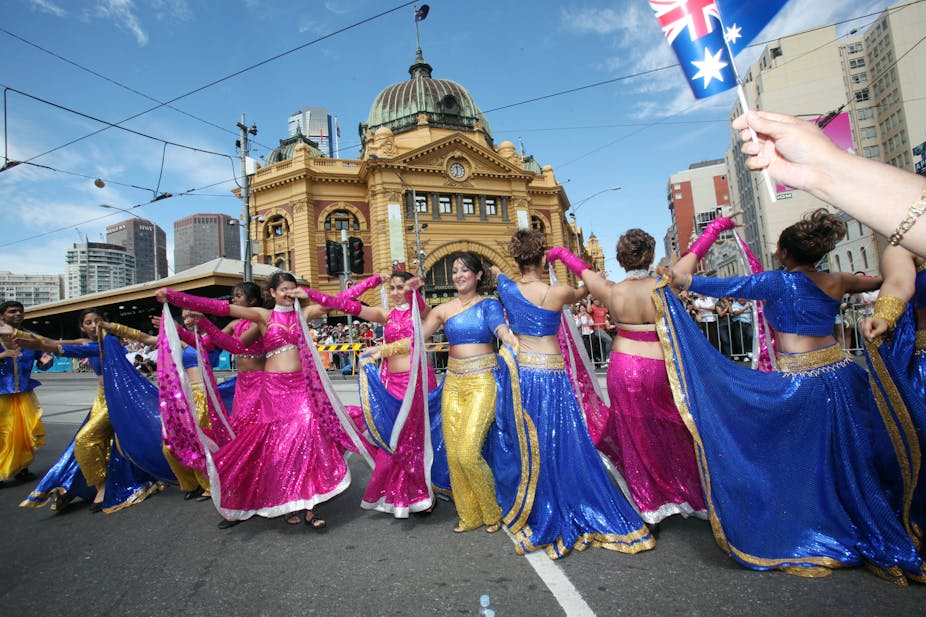The face of Australia is changing - and it starts at our borders.
Whereas Australia’s migrant population once hailed largely from a European background - think of the “Ten Pound Pom” in the post-World War Two era - a decisive shift towards parts of Asia to fill skills gaps in our workforce has emerged.
In 2011-12, India (29,018) and China (25,509) were ahead of Australia’s traditional source country for permanent migrants, the United Kingdom, which dropped to fourth on the list with 25,274 migrants.
Immigration is also now geared to the needs of the Australian labour market. 68% of all arrivals now come under the skilled migrant category of the permanent immigration program.
Australia remains a cosmopolitan nation, truly the world in one country. But the new immigration figures continue over a decade or so long trend: Australia has now changed from a settler immigration county to one where guest workers are arriving in large and increasing numbers.
Facts and figures
A government report released this week highlighted the pace and changing ethnic composition of contemporary Australian immigration.
The 2011-12 permanent migrant intake of 184,998 - or just over 200,000 when the humanitarian (refugee) intake is added - is one of the largest on record.
New Zealanders remained the biggest group of arrivals to Australia in 2011-12, with nearly 45,000 crossing the ditch. However, they can come to Australia at will – and are thus not counted under the migration program - because of the Trans-Tasman Mutual Recognition Arrangement.
Temporary migrant numbers
However, the impact of immigration is significantly greater when the temporary immigration program is also considered. India and China also fill the top two places in the temporary migration program.
In the past year temporary immigrants (679,333) outnumbered permanent immigrants (201,850) by a ratio of around three to one. Some 253,047 of these were foreign students, with working holiday makers (222,922) and temporary long stay business visas (125,070), mostly on 457 visas, taking up most of the other temporary migrant places.
The dramatic increase of temporary immigrant arrivals in the past decade is the biggest change in over six decades of Australian immigration policy.
As one of the “big four” traditional settler immigration nations (along with the UK, Canada and New Zealand), Australia previously linked immigration policy and immigrants to nation-building and citizenship.
The guest worker debate
It is amazing that this dramatic change to Australian immigration policy has slipped under the radar. There has been little debate about temporary immigration until the past few years when concerns about the exploitation of temporary skilled immigrants on 457 visas have been prominent in the media.

It seems that the disproportionate anxiety about “boat people”, driven in part by the bi-partisan political opportunism to be gained when playing the “foreign worker” card (as prime minister Julia Gillard did infamously at her Rooty Hill speech earlier this year), has stolen the oxygen from the guest workers immigration debate.
The “advantage” of guest workers is that when their labour is no longer needed - owing to the structural change or cyclical decline of the Australian economy that eliminated their job - they will go home or somewhere else in their journey as global workers.
The evidence from other countries is not good in this regard. The Turkish gastarbeiter or guest workers who arrived in Germany in the 1960s and 1970s are still there, with their children and grandchildren. Temporary workers have a tendency to want to stay. France tried to pay temporary immigrants to return to Africa a decade ago but it didn’t work.
But temporary immigrants do make good permanent immigrants. In Australia many temporary immigrants transform into permanent immigrants. Nearly half (42.9%) of places in the 2011-12 migration program went to those already in Australia under a temporary visa.
This makes sense: those who have experience living, working and or studying in Australia are the very people we should take in because their prospects of successful settlement are strong.

